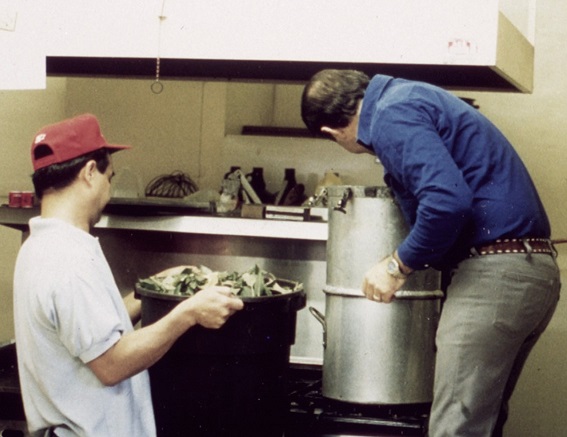Step 6 to Produce a Good Oil: Distillation

In 1989 I built my first distiller by welding two pressure cookers together. I built a swan neck out of copper pipe that ran to the copper-pipe coil condenser. The distiller was placed on the kitchen counter, and its water supply for cooling came from the faucet.
In this blog series, I have been explaining what I have learned in order to produce a quality, therapeutic-grade essential oil. After growing and harvesting, distillation is the next crucial step. Here is the procedure:
1. Load the extraction chamber tight.
2. Distribute the plant material in the chamber.
3. Maintain steam saturation at the right volume to keep the chamber hot to prevent homogenization of oils.
4. Keep ramping the steam temperature in volume to prevent reflux.
5. Know when to ramp volume and when not to in order to not flood the chamber and fracture the molecules.
6. Listen to the sounds of the steam to know when it’s time to ramp the temperature and not cause a chimney effect in the chamber.
7. Know when the steam will break into the swan neck of the condenser.
8. Know how to ramp without overheating the material and flooding the condenser.
9. Know what temperatures are necessary to get maximum extraction from the plant material without damaging the oil.
I invite you to come to one of the farms when we are distilling to see the distillation process firsthand.

